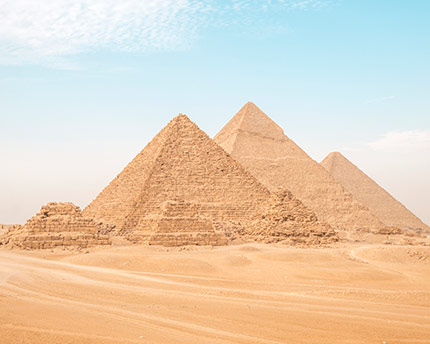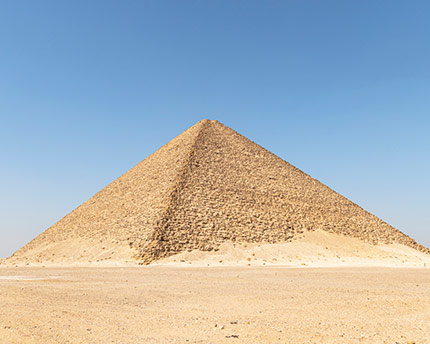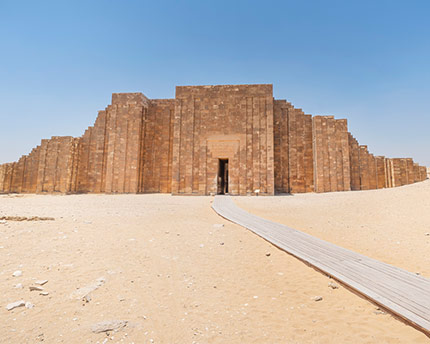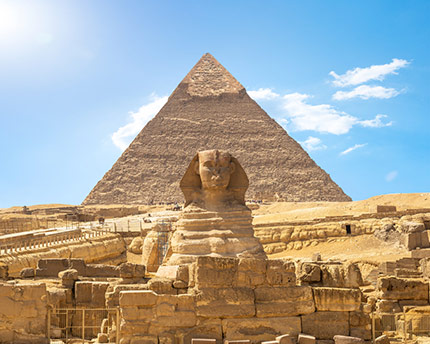Some parts of the world survive the test of time with an aura of mystery that makes you want to see them even more. This is the case with the three pyramids of Giza, considered to be the only “wonders of the ancient world” that have survived to the present day. Naturally, this place attracts millions of travellers every year who dream of walking among the pyramids, entering them, and taking thousands of photos. The best way to enjoy them calmly is to try to go early in the morning to see the sunrise from the pyramids or to stay until sunset. Admiring over 45 centuries of history is well worth an early start.
The experience of admiring the Pyramids of Giza can be complemented by other activities such as a camel safari in the surrounding area or a visit to other monuments such as the Great Sphinx. You’ve probably heard someone say that they were left disappointed. This usually happens when people have unrealistic expectations, and it also happens with other important monuments such as the Eiffel Tower or the Colosseum in Rome.
- Historia de las Pirámides de Giza
- Pirámide de Keops
- Pirámide de Kefrén
- Pirámide de Micerinos
- Visitar las pirámides de Guiza
- Dónde comer cerca de las pirámides
- Dónde dormir cerca de las pirámides
Our recommendation for this visit is to prepare well for the excursion and do your research beforehand in order to enjoy its monuments as much as possible. Read on because we’ve got many interesting facts to tell you.
History of the Pyramids of Giza
We won’t delve too deeply into the history of the Pyramids of Giza, but we will tell you some interesting facts. The pyramid shape of these funerary structures is sure to attract your attention. This shape only came about after the 3rd Dynasty, as they were previously built in the shape of a mastaba (or truncated pyramid). If you’ve seen the step pyramid of King Zoser, which consists of a group of stacked mastabas, you’ll have an idea. It was Cheops’ father, Pharaoh Snefru (in the 4th Dynasty), who began to build pyramids. And when his son succeeded him, he decided to do the same by building an immense pyramid on the Giza plateau. He was followed by Chephren (son of Cheops) and Mycerinus (son of Chephren).
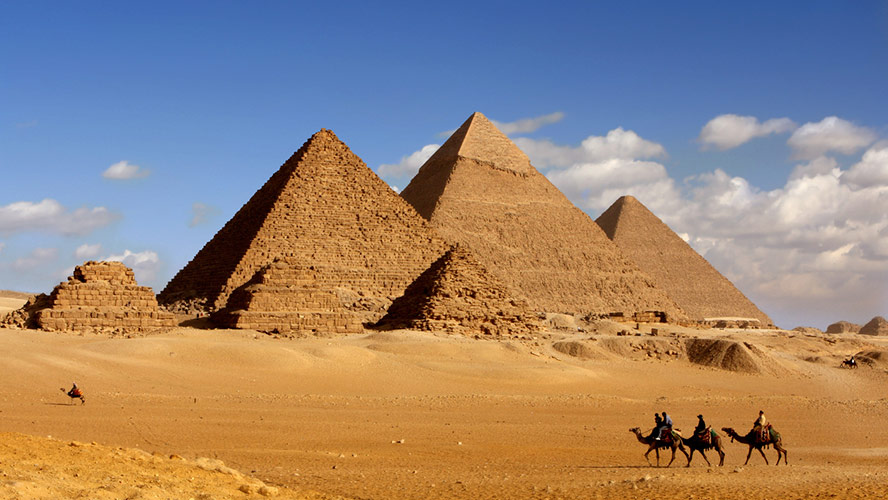
Theories about the significance of the pyramids have varied widely over time. Some historians claimed that the pyramid of Cheops was an astronomical observatory and that, after the pharaoh’s death, it was used as a tomb. Some even suggested that the pyramids were the “Joseph’s granaries” mentioned in the Old Testament. Nowadays, the most accepted theory is that the pharaohs chose the place where their tomb would be built, and the longer the pharaoh lived, the larger it would be. All this, without going into those theories that claim that the Egyptians weren’t the actual architects of the pyramids due to their rudimentary tools and the record time in which they were built.
Pyramid of Cheops
The Pyramid of Cheops is the largest and oldest of the three pyramids of Giza, and the one that has been most studied. It was built in the time of Khufu (Cheops), the second king of the 4th Dynasty (2589-2566 BC). Its construction required 2.3 million blocks, with each block weighing 2.5 tonnes on average, although some weighed up to 15 tonnes. Another curious technical fact is that the pyramid measured 146.6 metres with the cladding, but over time it has shrunk by about ten metres.
In the 9th century, the decision was made to open the pyramid and investigate its interior, where three empty chambers were found, with the exception of the sarcophagus of Cheops. In order to reach the Queen’s Chamber, the King’s Chamber, and the Grand Gallery you have to walk, and sometimes crouch, through claustrophobic corridors.
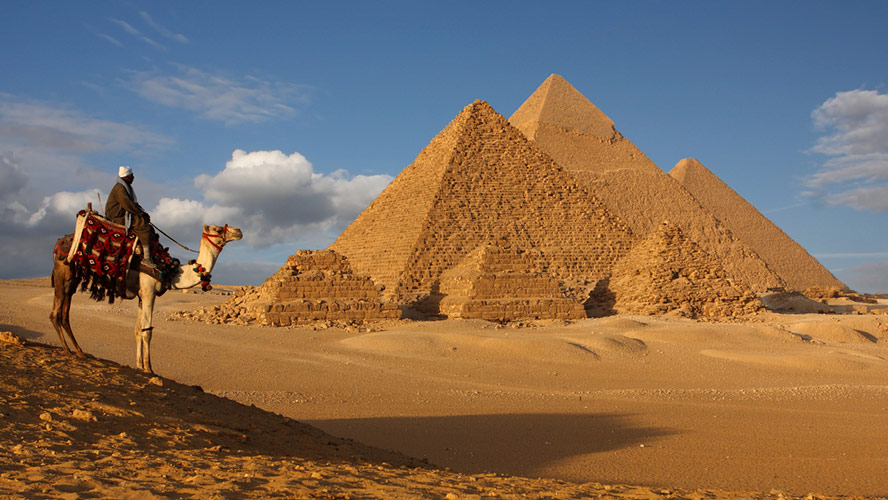
Pyramid of Chephren
The second pyramid is that of Pharaoh Chephren, son of Cheops and fourth king of the 4th Dynasty (2558-2532 BC). It’s slightly smaller in size than the one previously mentioned, measuring 136.4 metres in height, although the elevation of the terrain makes it appear larger. Inside there are two chambers, one of which houses a sarcophagus. If you look around to the east of the pyramid, you can see part of a causeway and the remains of a mortuary temple.
Pyramid of Mycerinus
The third of the three pyramids at Giza is located at the southern end of the plateau and was commissioned by Chephren’s son, Mycerinus (2532-2504 BC). It’s the smallest and is barely over 65 metres high. Like that of Chephren, it’s covered with Tura limestone. It’s said that in 1837 Colonel Vyse managed to get inside and found a wooden coffin with a mummified body and the name of Mycerinus in hieroglyphics. The coffin was sent to England to be opened there but the ship it was on was shipwrecked and was never heard of again.
Visit the Pyramids of Giza
If you’re staying in Cairo, you have several options for visiting the Pyramids of Giza. The easiest way is to book a half-day or full-day excursion. If you’d prefer to go on your own you can get there by taxi (ask for a price and haggle a little), by bus that leaves from nearby, or by metro (M7) but this will leave you in Giza and you’ll have to get a taxi the rest of the way. There are two entrances, one in the area where the Pyramid of Cheops is located and the other near the Sphinx. If you have an international student card, you’ll get a discount on the entrance fee. There are combined tickets that include a pass to the site, entrance to several pyramids, and a pass to the Solar Boat Museum. It will be worth your while.
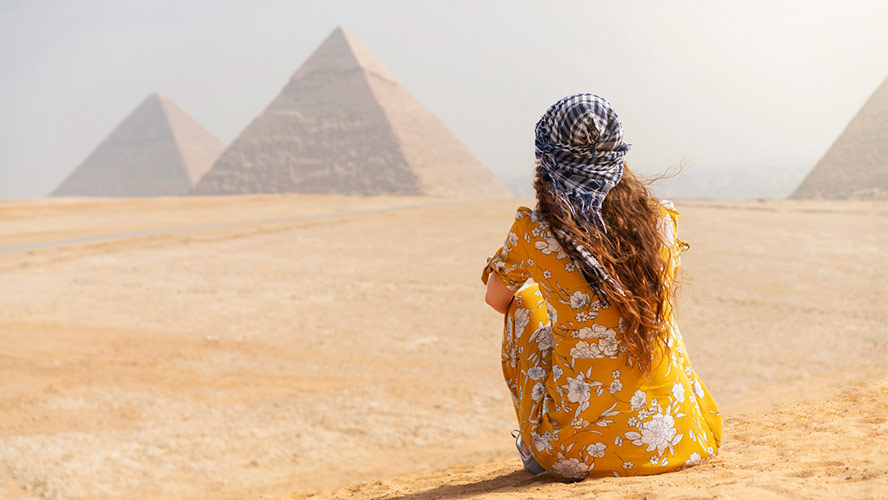
The best time to visit is early in the morning because it’s cooler and there are fewer tourists. Don’t forget to bring a bottle of water, a headscarf or cap to protect your head from the sun, and sunscreen.
Be sure to ask about the nightly sound and light shows if you feel like going, or you can enjoy them from a panoramic restaurant.
Where to eat near the pyramids
In the city of Giza, you’ll find plenty of restaurants where you can enjoy local food. It’s a very touristic area and you’ll have no trouble finding one that suits you. One of them is El Dar Darak, a family-run restaurant with a diverse menu, affordable prices, friendly service, and English-speaking staff; that’s all you can ask for. Even closer to the pyramids is Gaby’s, which, although it’s usually full of tourists, serves delicious local cuisine and even has a wine list.
Another establishment we love, a few kilometres from Giza, is the Horus restaurant at the Barceló Cairo Pyramids, which is located on the 12th floor of the hotel and offers spectacular views of the pyramids at sunset.
Where to stay near the pyramids
You don’t have to go far from the three pyramids to find a hotel that offers all the assurances of a Spanish hotel group. We’re talking about the Barceló Cairo Pyramids, a four-star hotel located just four kilometres from the Giza plateau, which offers a spectacular panoramic view of these “Wonders of the Ancient World”. The hotel, with 236 spacious and beautifully decorated rooms, is located on Sharia Al Haram, one of Cairo’s most famous avenues. The hotel has three bars and three restaurants, one of which has a panoramic terrace. This is undoubtedly a very wise choice to stay in Cairo.

























































